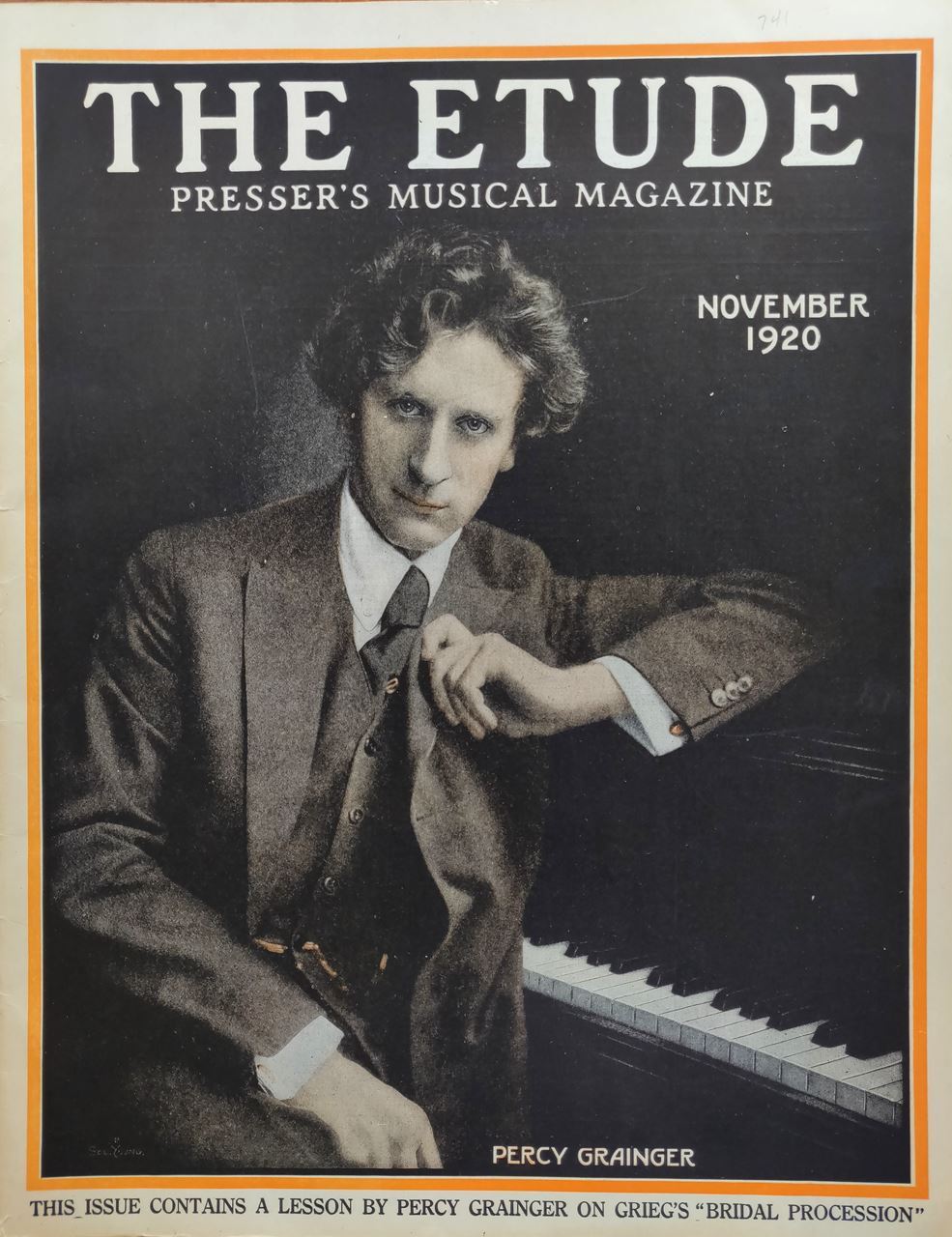By Barry Peter Ould
 The Etude Magazine was an American print magazine dedicated to music founded by Theodore Presser (1848–1925) at Lynchburg, Virginia, and first published in October 1883. Presser, who had also founded the Music Teachers National Association, moved his publishing headquarters to Philadelphia, Pennsylvania in 1884, and his Theodore Presser Company continued the magazine until 1957. It was a staple for music teachers throughout the country, providing articles related to music history, new developments in music, and practical teaching techniques, as well as musical scores from the classics and new pieces for beginning to advanced students. Begun as an aid for piano teachers, the magazine grew to include information and literature for vocal and instrumental enthusiasts as well. Not only is the series important to the musician, but it provides an insight into the culture itself, including the impact of the development of the car, radio, and television, and expands to world music and the influence of world wars on that culture.
The Etude Magazine was an American print magazine dedicated to music founded by Theodore Presser (1848–1925) at Lynchburg, Virginia, and first published in October 1883. Presser, who had also founded the Music Teachers National Association, moved his publishing headquarters to Philadelphia, Pennsylvania in 1884, and his Theodore Presser Company continued the magazine until 1957. It was a staple for music teachers throughout the country, providing articles related to music history, new developments in music, and practical teaching techniques, as well as musical scores from the classics and new pieces for beginning to advanced students. Begun as an aid for piano teachers, the magazine grew to include information and literature for vocal and instrumental enthusiasts as well. Not only is the series important to the musician, but it provides an insight into the culture itself, including the impact of the development of the car, radio, and television, and expands to world music and the influence of world wars on that culture.
Aimed at all musicians, from the novice through the serious student to the professional, The Etude printed articles about both basic (or “popular”) and more-involved musical subjects (including history, literature, gossip, and politics), contained write-in advice columns about musical pedagogy, and piano sheet music, of all performer ability levels, totaling over 10,000 works. James Francis Cooke, editor-in-chief from 1909 to 1949, added the phrase "Music Exalts Life!" to the magazine's masthead, and The Etude became a platform for Cooke's somewhat polemical and militantly optimistic editorials. The sometimes conservative outlook and contents of the magazine may have contributed to a decline in circulation in the 1930s and 1940s, but in many respects it moved with the times, unequivocally supporting the phonograph, radio, and eventually television, and, by the late 1930s, fully embracing jazz. By the end, George Rochberg was an editor of The Etude under Guy McCoy, who had succeeded Cooke as editor-in-chief after over two decades as an assistant, and the magazine's musical content had come more closely in-step with the contemporary world.
Grainger’s association with this magazine spanned a total of 28 years. His first contribution appeared in September 1915 and his last in September 1943. Below, I have compiled a list of these articles together with the Volume No. and issue No. followed by the page numbers where they appeared. Copies of all the magazines can now be found at:
https://digitalcommons.gardner-webb.edu/etude/
where they can be downloaded as PDFs. Grainger’s name as a pianist par excellance also appears in various issues, either in articles by others or referenced in quotes.
 In his first appearance in this magazine he was interviewed on the subject of ‘Modernism in Pianoforte Study’ (Volume 33/9; September 1915 pp. 631-632) with a second section of the interview appearing in the next issue (Volume 33/10; October, 1915 pp. 709-710) entitled ‘A Blossom Time in Pianoforte Literature’.
In his first appearance in this magazine he was interviewed on the subject of ‘Modernism in Pianoforte Study’ (Volume 33/9; September 1915 pp. 631-632) with a second section of the interview appearing in the next issue (Volume 33/10; October, 1915 pp. 709-710) entitled ‘A Blossom Time in Pianoforte Literature’.
This was followed by ‘Modern and Universal Impulses in Music’ which appeared in (Volume 34/5; May 1916 pp. 343-344) with another phase of this subject appearing in the subsequent edition (Volume 34/6; June 1916 p. 412) ‘The World Music of Tomorrow’.
Grainger’s next major contribution ‘A Master Lesson on Grieg’s “Norwegian Bridal Procession” op. 19 No. 2’ appeared in the November 1920 edition (Volume 38/11 pp. 741-745) along with Grainger’s analysis and a printed edition of the piece for study or concert performance. This was also made available as a separate score with the parallel text of Grieg’s original by Theodore Presser (No. 17035) and copies of this can be obtained from the Grainger Societies music archive.

Another interview with Grainger appeared in the October 1921 issue (Vol. 39/10 pp. 631-632) with the conclusion appearing in the next issue (Volume 39/11 pp. 707-708). This was entitled ‘Glimpses of Genius’ and included Grainger’s writings about Ferruccio Busoni, Frederick Delius, Edvard Grieg, Cyril Scott and Richard Strauss.
For the September 1924 issue (Volume 42/9 pp. 592-594) Grainger writes about Jazz in his essay ‘What Effect is Jazz Likely to Have upon the Music of the Future. This was followed by ‘New Ideas on Study and Practice’ in the December 1925 issue (Volume43/12 pp. 845-846) and concluded in the next issue January 1926 (Volume 44/1 pp. 23-24).

It was another 15 years before Grainger wrote again for The Etude and his next contribution labelled a conference was called ‘Reaching Your Goal at the Keyboard’ (Volume 59/2; February 1941 pp. 79-80, 134). This so-called conference was expressly secured for The Etude by Myles Fellowes.
Grainger’s final contribution was his 4-part essay on Edvard Grieg ‘Grieg – Nationalist and Cosmopolitan’ which appeared in the June to September 1943 issues (Volumes 61/6; 61/7; 61/8 and 61/9, pp. 386, 416-418; 428, 472; pp.492, 535 and 543 and pp. 569 and 616 respectively).